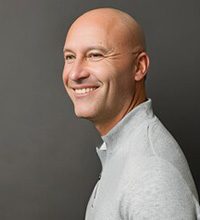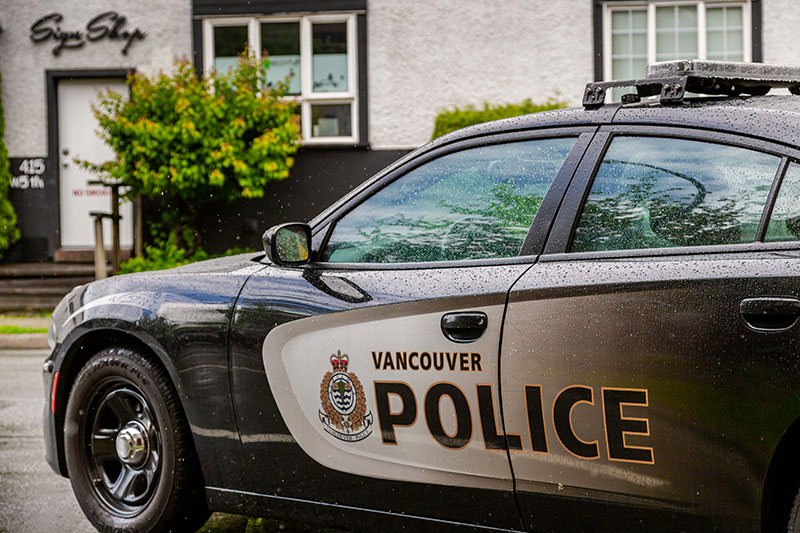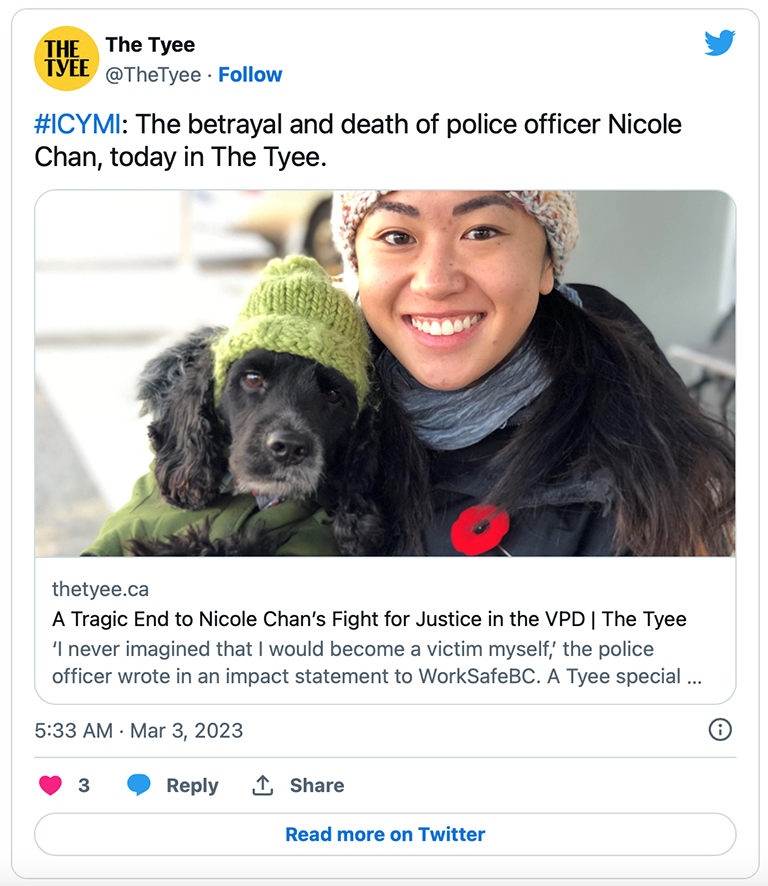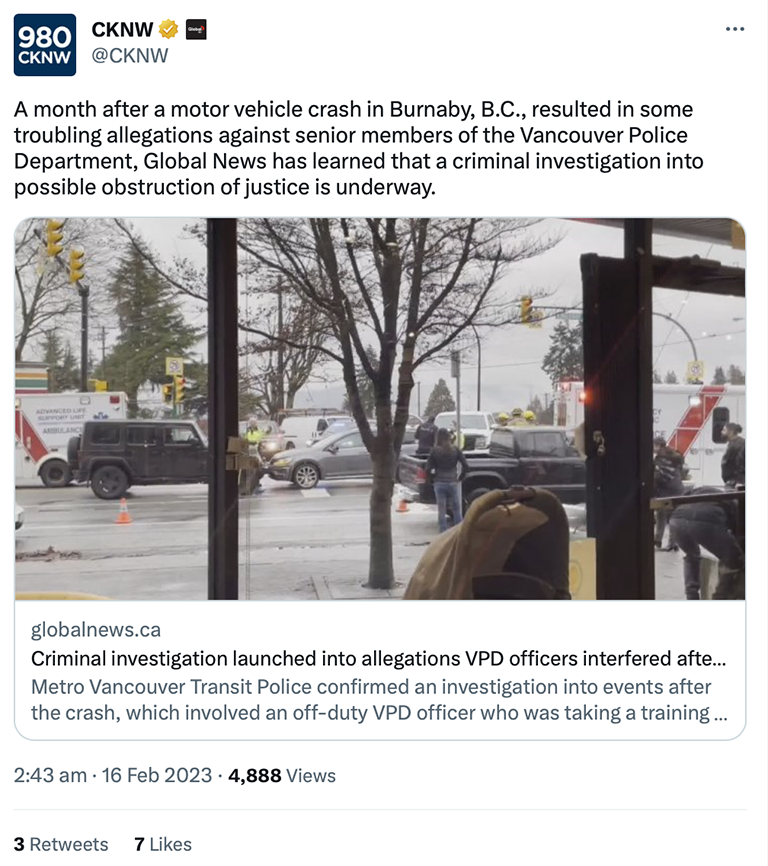Chan’s story exposes how cop culture and the impenetrable ‘blue wall’ turned their back on her during her time of need.
In January 2019, Const. Nicole Chan – a 30-year-old, nine-year member of the Vancouver Police Department – took her own life hours after being discharged from Vancouver General Hospital amid a mental health crisis.
Chan said she had been subjected to a pattern of abuse by senior members of the Vancouver police force starting when she was being recruited to the department. Her story exposes how cop culture and the impenetrable ‘blue wall’ turned their back on her during her time of need.
Chan’s history of mental health issues, a direct result of her treatment by the Vancouver Police Department, made her particularly vulnerable to the predatory behaviour of those in positions of power.
As is often the case, the perpetrators were the very people responsible for keeping all members of the public safe.
The dark side of cop culture
Chan’s story hasn’t gone unnoticed yet it’s sadly not new. Law enforcement agencies across Canada have been plagued with allegations of bullying, harassing and sexually abusing their own members.
In January 2023 – four years after Chan’s suicide – a coroner’s inquest into her death delivered 12 recommendations highlighting severe systemic issues within the Vancouver Police Department.
The inquest jury’s recommendations reflect common sense, which is often sorely lacking not just at the Vancouver Police Department, but at other organizations.
The five-person jury noted that department leadership, human resources and the police board have failed to address the culture of bullying and harassment within the force, and recommended support systems to help members struggling with their mental health.
One recommendation called for “mandatory, rigorous, in-person and respectful” workplace training on a regular basis for officers of all ranks in the department. That’s already mandated by WorkSafe BC law and policy, although the legislation does not speak to the quality nor duration of training.
The jury also noted that members of the Vancouver Police Department’s human resources department weren’t qualified for their positions, and lacked training, certification and proper oversight.
Other recommendations included creating a protocol that would require admitting physicians to consult with friends, family, first responders and other professionals to assess suicide risk properly – something that should have already been happening since it’s a best practice standard.
The inquest jury performed well after hearing heart-wrenching testimony. Their recommendations reflect common sense, which is often sorely lacking not just at the Vancouver Police Department, but at other organizations.
The truth about cop culture
Loyalty and solidarity can be positive qualities – until they aren’t. Cop culture is a phenomenon that encompasses the shared values, practices and beliefs held by members of law enforcement.
The blue wall of silence is a serious issue for police forces around the world. Officers tend to protect one another by failing to report misconduct, which perpetrates a lack of accountability, creating a toxic work environment and eroding public trust.
It can foster support among officers and camaraderie, but it also contributes to the unwritten live-or-die mentality of the “blue wall of silence” that results in cops protecting cops when misconduct occurs.
Respecting that blue wall can include subverting the law, turning a blind eye to major misconduct and ignoring blue-on-blue crime. It means the police have lost the ability to police themselves.
The blue wall of silence is a serious issue for police forces around the world. Officers tend to protect one another by failing to report misconduct, which perpetrates a lack of accountability, creating a toxic work environment and eroding public trust.
Take the recent inquest into the death of Myles Gray after he sustained a severe beating by the Vancouver Police Department in 2015. The inquest jurors deemed his death a homicide and six police officers were charged under the Police Act for failing to take notes of the incident.
In fact, even as the inquest into Chan’s death was proceeding, it was revealed that new allegations of misconduct by members of the Vancouver Police Department are being investigated by the Office of the Police Complaint Commissioner.
It’s alleged that as many as a dozen officers, including Supt. Tanya Whysker and Insp. Kelly Risebrough, obstructed the Royal Canadian Mounted Police following a traffic incident involving a Vancouver Police Department member.
There’s now an ongoing criminal investigation into obstruction of justice – further underscoring that the department considers some of its members above the law.
Vancouver Police Chief Adam Palmer has responded to the allegations by saying: “We have to get the facts and find out what happened. Based on what I’ve heard, (I’m) not that concerned.”
In fact, Whysker has since been promoted to lead the department’s 2026 FIFA World Cup preparation, and Risebrough is representing the Canadian Association of Chiefs of Police on a publicly funded trip to South Africa, Botswana and Turkey to look at how to build police trust with youth.
Failure of leadership
Chan’s ordeal was not an unknown secret in the Vancouver Police Department. Her colleagues, senior constables, sergeants, human resources staff and an inspector knew what was happening.
Not one of them did what was right. They did what was easy, which was to bend to cop culture, turn a blind eye and cover things up.
The consequences of workplace bullying and harassment are profound. They can include anxiety, depression, post-traumatic stress disorder and suicide among employees.
Three months after the release of the coroner’s inquest recommendations, Palmer released a statement sending heartfelt condolences to Chan’s family and accepting the recommendations. He made no mention of holding his force accountable for events that contributed to her death.
Time and time again, law enforcement leadership has failed to address the systemic and profoundly ingrained culture of bullying and harassment within its ranks.
Studies show that 75% of workers have reported being impacted by workplace violence in the form of bullying and harassment. In addition, approximately 80% of women and 30% of men have faced sexual harassment and abuse at work – and 72% of the time, the perpetrator was someone in a position of authority.
The consequences of workplace bullying and harassment are profound. They can include anxiety, depression, post-traumatic stress disorder and suicide among employees.
This is an urgent public health issue that requires actual intervention by lawmakers. Maybe Chan’s death – perhaps a ‘Nicole’s Law’ – could help reshape the legal system’s response to preventable violence at work.
This article first appeared on The Conversation, and is republished under a Creative Commons Licence; you can read the original here.
About the Author
 Dr Jason Walker is an associate professor and vice chair of the Senate at the University Canada West; he also holds adjunct clinical professor position at the City University of Seattle School of Behavioral Sciences and adjunct professor of psychology at Adler University. He is a chartered psychologist, chartered professional in human resources, crisis interventionist, addiction and recovery specialist, diplomate for the American Academy of Experts in Traumatic Stress, and published researcher. He is internationally recognized as an expert in the assessment and intervention related to workplace violence.
Dr Jason Walker is an associate professor and vice chair of the Senate at the University Canada West; he also holds adjunct clinical professor position at the City University of Seattle School of Behavioral Sciences and adjunct professor of psychology at Adler University. He is a chartered psychologist, chartered professional in human resources, crisis interventionist, addiction and recovery specialist, diplomate for the American Academy of Experts in Traumatic Stress, and published researcher. He is internationally recognized as an expert in the assessment and intervention related to workplace violence.
Picture © CineCam / Shutterstock




